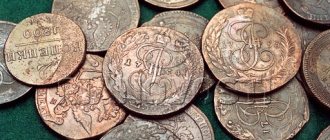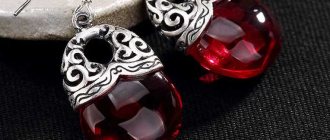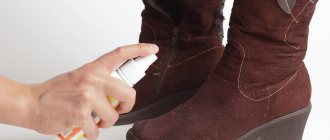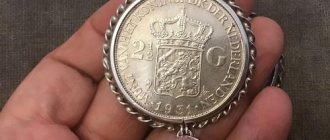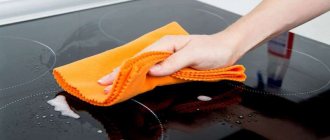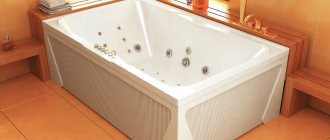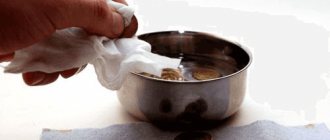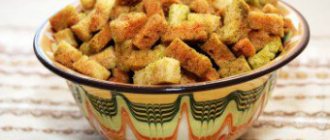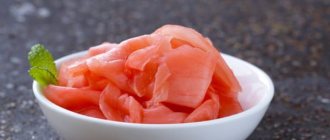Ancient coins are very attractive, however, all their attractiveness disappears when they darken. So the question arises, how to clean copper coins? This problem can be solved by various means without harm to the metal. If you need to eliminate this drawback, then in the kitchen there will probably be something that will help put the coin in order. First you need to figure out how and what to clean copper coins at home. You will need a little salt, flour, vinegar, lemon and warm water. In the bathroom we will need an old toothbrush and toothpaste. Other tools that we will need are ammonia solution. Now you can start cleaning the coins.
General cleaning process
Before the coin cleaning process, it is better to determine the type of oxide on the coins. Copper oxide is a very harmful type of oxide for copper coins because the oxide reacts with air and is very poisonous. This type of oxide is the most difficult to clean.
There is also an oxide called patina. This type does not have a negative effect on coins; on the contrary, it protects coins from exposure to gases. This oxide is formed when a coin is left underground or in the air for a long time. If such an oxide is on a coin, then this is evidence of authenticity.
Before the cleaning process, soil and dirt must be removed mechanically. The coin is washed in a soap solution and dried.
Lemon
Place a coin in a lemon slice for 20 minutes. After removal, the coin must be cleaned with a toothbrush. Next, rinse it in warm water and wipe dry with a cloth.
Salt
You need to mix one tablespoon of salt with a tablespoon of flour and a drop of vinegar. You need to rub the coin with this powder. After 15 minutes, the coin is rinsed and dried to avoid the appearance of black spots.
Vinegar
Bring a glass of water to a boil and add concentrated vinegar (a couple of tablespoons) and three tablespoons of salt. Place the coin in this liquid and wait until the water reaches room temperature. Next, you need to take out the coin and thoroughly clean it with a toothbrush, rinse and wipe.
Toothpaste
The soaked coin should be cleaned with a toothbrush and toothpaste. After the required time, the coin is rinsed and dried. If the result is not satisfactory, the cleaning procedure is repeated again.
Special fluids
A special liquid will help you easily remove oxide and other traces. This liquid is sold in jewelry workshops and stores. To achieve a visible effect, the coin is dipped in liquid for 15 minutes and then simply wiped with a cloth.
If for some reason it is not possible to do this yourself, then the jeweler will be able to do this work himself - he will clean and polish the coin with professional equipment, and also apply a coating that will protect the metal surface.
Coca Cola
Everyone knows that Coca-Cola cleans various surfaces well. This drink can also help clean coins. The drink is poured into a glass container and an object is placed there. We leave all the contents for a week. To speed up the results, the dishes can be placed near a heat source, as increasing the temperature of Coca-Cola enhances the cleansing properties.
Electrolysis method
Everyone knows what electrolysis is. To clean a coin using electrolysis, you need to have a small power supply, a ceramic container, and a saline solution (1 tablespoon per liter of water). We attach the “minus” to the coin, and the “plus” to any metal object. The entire structure is lowered into the solution, and the power is connected to the network. The liquid will quickly become cloudy as all dirt and oxides dissolve.
Cleaning coins by boiling them in soda
I used to boil my finds in soda very often. This method is quite fast, but it is much easier to ruin a coin with it than with soap. In a metal bowl, soda is diluted in water, coins, previously washed under the tap, are thrown in, and the whole thing is put on fire. When the solution boils, the coins begin to jingle cheerfully against the bottom. But it’s worth keeping an eye on it and turning down the heat when foam starts to rise. If you look at this moment, the stove will be covered in soda and dirt from coins. We cook for 5-10 minutes and begin to remove the finds with tweezers, the gripping part of which is pre-wrapped with electrical tape so as not to scratch our experimental subjects. And so on until the coins are completely cleared.
After all this, you need to rinse the cleaned rounds under running water and rub them with a brush. If there is any dirt left, we throw it back into the boiling soda, but if the coin is clean, then we lubricate it with Vaseline oil. All! The coins are ready.
I noticed that if the copper is initially eaten, then at the end of cleaning the field of coins will turn out to be porous. Well, if the find is not raised from the field, but from more gentle soil, then the field will turn out clean, even and glossy. In my opinion, soap does not expose these small cavities as much. If you boil a coin, you can say goodbye to the patina. The copper will come out of the solution red, like a lobster.
Cleaning coins of various alloys
Copper coins
How to clean a copper coin? As already mentioned, the easiest method of purification is to soak the copper coin in an alkaline solution. The biggest advantage of this method is that there is no side effect for the alloy. Sometimes it is necessary to remove the coin for rinsing in water and cleaning with a toothbrush. The procedure can be repeated over many months until the best result is achieved. It is also possible to use vinegar.
Cupro-nickel coins
Often, a copper-nickel coin does not need to be cleaned because the nickel does not react with surrounding substances. But copper, which is also present in the coin, provokes the appearance of oxidative processes. In this case, a patina (green or dark red) appears on the copper-nickel coin. How to clean a copper coin from green deposits and white deposits? Plaque can be easily removed along with unnecessary oxide with a light vinegar solution.
Bronze, silver and gold coins
Bronze coins are cleaned in the same way as those made from copper. For gold coins, a good effect is achieved after washing in a solution with baby soap, and the coin should be cleaned with a soft sponge. As for silver, it is better to find out what standard the silver coin is made of. Silver (not lower than 625 standard) can be cleaned with ordinary ammonia. This product is very cheap, and you can find it in the nearest pharmacies. Low sterling silver can be cleaned well with lemon juice. The coin should be dipped in lemon juice without diluting it. It is important to note that the silver coin was not in contact with oxygen, in order to avoid the appearance of irremovable oxidation in areas of contact between the two media. It is best to shift the coin to different sides every five minutes. It should be kept in liquid until the oxidation disappears. Upon completion of the procedure, the coin is washed and dried.
It is also good to rub silver with soda moistened with a small amount of water until the oxide completely disappears.
Iron-zinc coins
Care must be taken when cleaning zinc iron coins. They can be cleaned with a weak solution of hydrochloric acid, carefully using a brass brush to clean them.
To give a shiny effect and enhance the color, you can rub zinc-iron coins with felt cloth or felt boots.
It is better to remove whitish plaque, as well as pockets of rust, with a thin needle and a sharp surgical scalpel. Next, you should lower the coin into the saline solution, constantly monitoring the process. If the concentration of the solution is too high, the coin may be damaged and, accordingly, it will be impossible to sell such an item. The coin should be washed until the rust and oxide have dissolved, and then dried.
Cleaning silver coins with Trilon B
Trilon B is a strong product specially designed for cleaning metal surfaces. An aqueous solution of Trilon B dissolves almost all metal salts, but since Trilon is neither an acid nor an alkali, it does not damage the metal at all. The peculiarity of cleaning silver coins in trilon is that the coins come out with a patina (they do not shine like after citric acid and ammonia). This effect can sometimes be useful.
| These 15 kopecks from 1923 were also a rather complicated case. At first glance, it is impossible to say whether a normal coin or a “kakalik” will come out of the oxides. Cleaning with Trilon is a little faster than cleaning with citric acid, but slower than with ammonia. In total, cleaning this coin required keeping it in the solution for about a day. |
What is the best way to clean coins with white coating?
White spots indicate that there is a zinc alloy in the copper. The simplest cleaning method is to use distillate. The coin is placed in water for 2-3 days. It may be that the copperhead will come off in the form of green flakes. In this case, it is removed either with a needle or a brush, both toothbrush and household brush.
Soap solution for coins (cleaning finds)
Home » Tips and tricks » Soap solution for coins (cleaning finds)
Date of publication: 08 August 2015 at 00:56
Soap solution for coins
Finding the right place to look for coins is not enough. As I have written before and repeatedly, you also need luck to swing the reel where there is definitely something. But even here the search engine may have difficulties, because the coin can be damaged when digging, in the literal sense of the word: hit with a shovel, scratched, completely breaking it.
And some novice lovers of instrument search, after digging up a coin, begin to vigorously rub and clean it right on the spot. The result is known in advance - the coin will be damaged. And if you managed to dig up some object made of thin wire or a decayed copper ring, then by rubbing it in this way while wearing gloves, you can easily turn the find into powder. That's it.
There are finds that are better not to rub
I once emphasized to novice treasure hunters that their finds must be handled very carefully. Do not rub or clean them directly on the field. Just put the find in the swag bin and forget about it until you get home, and once there, you can do a little work with the find.
It is better to put the recovered finds in the swag bin
Read on "E-KLAD": Treasure hunting in the heat: tips and recommendations
There are a great variety of methods for cleaning copper coins and objects.
1. Electrolysis (which I already mentioned) 2. Dishwashing detergents 3. Ammonia solution 4. Mechanical cleaning and much more
Among all the methods, one that stands out is the method of soaking (keeping) copper objects in a soap solution. But more on that later. Ideally, coins undergo primary processing at home. As a rule, they are simply washed under running warm water (not hot or cold). You can also soak them in a bowl of soapy water.
Coins prepared for soap solution
At this stage, it is already clear which coins can be reanimated in the future, and which ones have turned into round pieces eaten away by time; it will no longer be possible to restore the design on the latter. After the coins are sorted, the stage of additional cleaning begins. And the most humane of them, in relation to copper coins , is soaking in a soap solution, or more correctly, in a soap slurry.
Soap pieces before soaking
Read on E-KLAD: What to take with you on your search
The meaning of the method is this: you need to take several pieces of soap, grate them, add water to the shavings, knead the whole thing to get a semi-liquid mass, into which you place the coins, immersing them completely in this solution. After the coin has been in the pulp for 2-3 days, it is taken out, washed, gently brushed with a toothbrush and put back into the soap. If necessary, add water to the pulp.
Coins in soapy water
The cleaning process using this method is quite long, it can take up to 1-2 months, but at the end you can get a coin on which the pattern will clearly become clearer and the green will disappear. Other methods are much faster, but you can ruin your find just as quickly.
Cleaning coins with a toothbrush
Questions often arise: what soap to use? If you manage to get regular laundry soap, that’s good; if not, you can take the cheapest soap (several bars) and get results in a month or two. So, it’s not enough to find a coin, it’s also important to preserve it and clean it properly. Something like this!
Clean coins and more to everyone! What is not clear, ask in the comments!
Read on "E-KLAD": Night search with a metal detector
Your Alexander Maksimchuk! The best reward for me as an author is your like on social networks (tell your friends about this article), also subscribe to my new articles (just enter your email address in the form below and you will be the first to read them)! Don’t forget to comment on the materials, and also ask any questions you have about treasure hunting! I am always open to communication and try to answer all your questions, requests and comments! Feedback on our website works stably - don’t be shy!
What is the best way to clean black and green from the surface of a copper coin?
Next, we will learn how to clean the greenery from a copper coin. The coin is wiped with pieces of cotton wool soaked in ammonia, and then rinsed in a solution with soap. Ammonia compounds react with copper compounds, resulting in green and black stains, followed by a complex that dissolves in water and is easily washed off.
What not to use and do when cleaning coins
- Highly concentrated acid solutions can melt the striking on coins;
- abrasive sandpapers for construction often remove “patina” and embossing;
- Temperature changes can adversely affect the strength of the coin. After heating, the coin suddenly falls into a cold temperature, which provokes the destruction of the “patina” and can damage the structure of the coin;
- metal brushes are harder than brass, so their use is not recommended, as the pattern and “patina” are erased.
